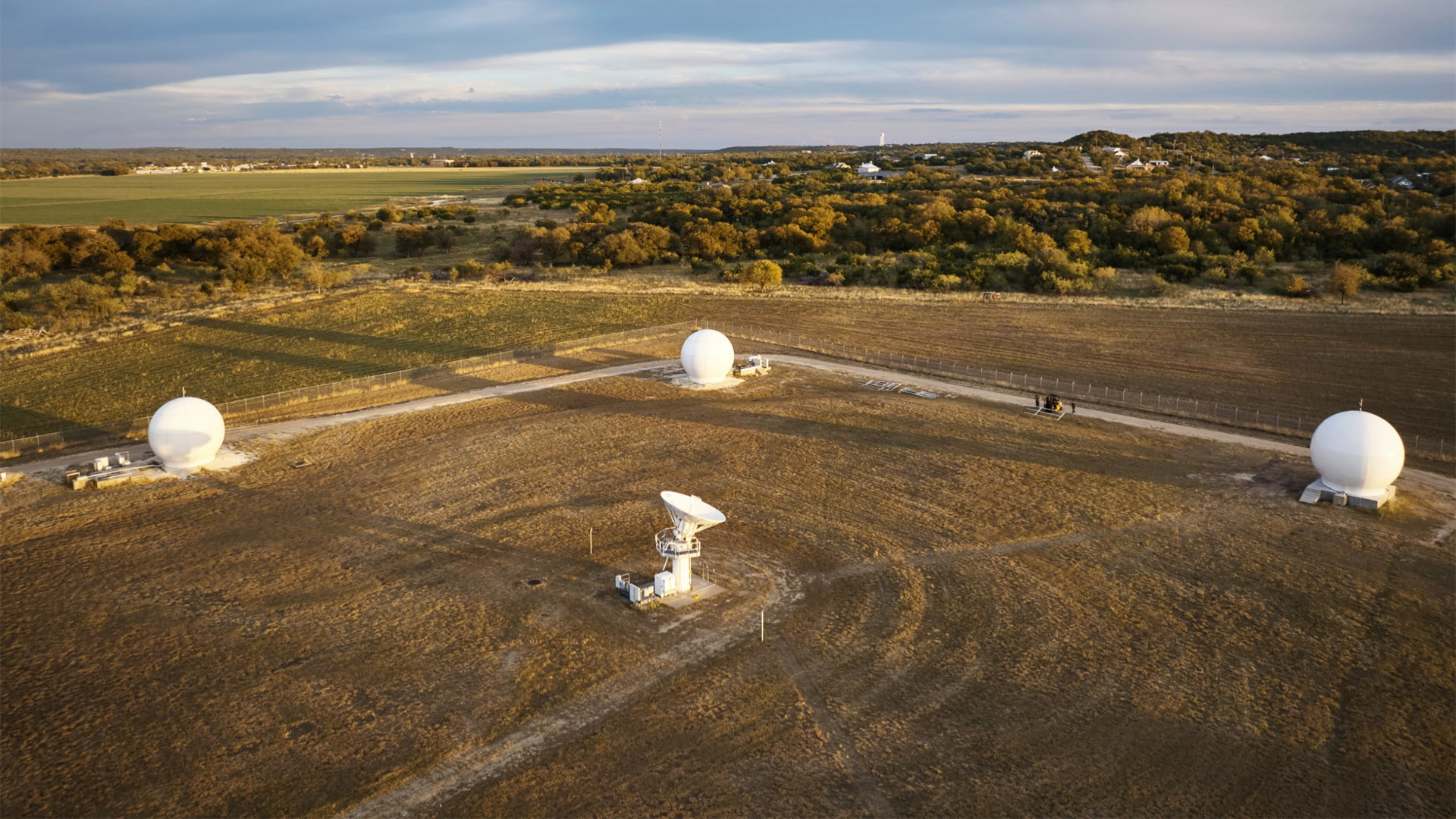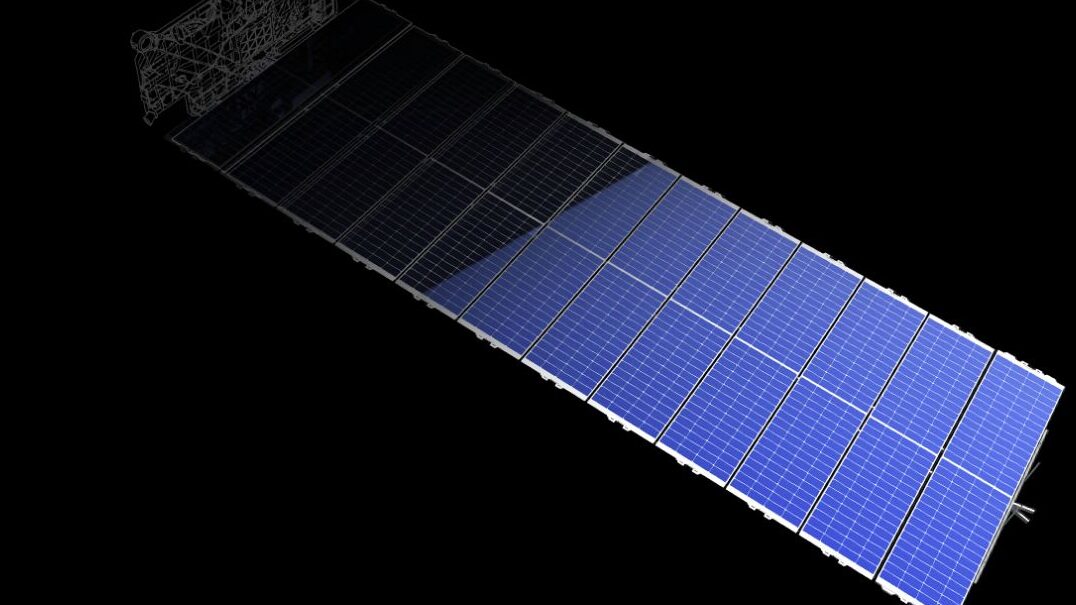Affiliate links on Android Authority may earn us a commission. Learn more.
Android and iPhone satellite connectivity: Here's what you need to know
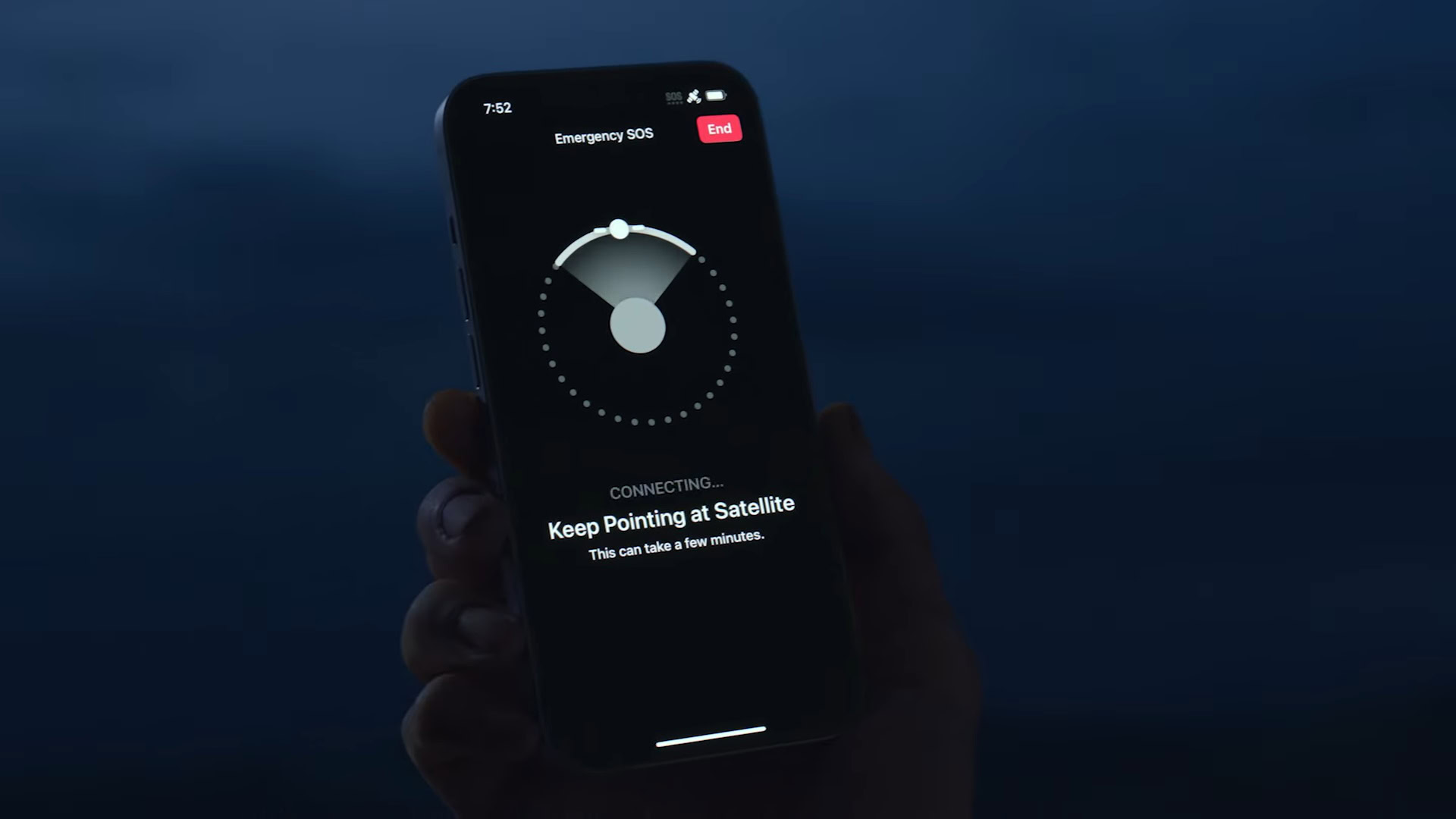
When the iPhone 14 launched, one of its key talking points was its satellite connectivity. In case of an emergency, the iPhone 14 series could connect to a low-orbit satellite and send an SOS message, even when there is absolutely no cell signal on the phone. Android, of course, wouldn’t be left far behind either, as many OEMs have now promised to offer satellite connectivity support. But what exactly is satellite connectivity, and how does it work on iPhones and Android? We bring you the answer.
What is satellite connectivity?
A satellite phone, sometimes called a satphone, is a phone that connects to a telephone network through satellites that orbit the Earth. This is unlike our modern-day smartphones, which connect to ground-based cell towers.
Connections made over satellites, through satellite phones, for example, come under the ambit of satellite connectivity, though modern smartphones are now beginning to incorporate satellite connectivity too. We need to understand how satellite and cell phones differ to unravel the difference in approaches.
Satellite phones vs cell phones
The fundamental difference between the two is how signals are transmitted by satellite phones and smartphones.
A cell phone primarily connects to a cell tower on land. If you can visualize the Earth’s surface as a giant grid, then each small unit grid can be considered an individual cell. Each cell would require a cell tower to service the small geographical area within its grid. The closer you are to the cell tower, the better the network reception on your cell phone.
A cell phone connects to a cell tower on land. A satellite phone connects to a satellite that is orbiting over the Earth.
When you move from one cell to another, your phone switches cell towers to latch onto the closest cell tower. However, your phone will lose signal if a cell tower is not nearby. You will not see any network connection on your phone, you will not receive any network services, you will not be able to receive any calls nor send any messages, and you will not be able to access the internet.
Most urban areas with high populations have a dense mesh of cell towers, but rural lands with sparse populations have a significantly lighter mesh of cell towers, and you will notice call drops and “out of network” errors much more frequently there. The more remote the area, the higher the likelihood of not having a serviceable network connection, simply because the economies of scale are not present to provide network service. But that does not mean there is no need for network connectivity in those regions because there still is, especially for emergency needs.
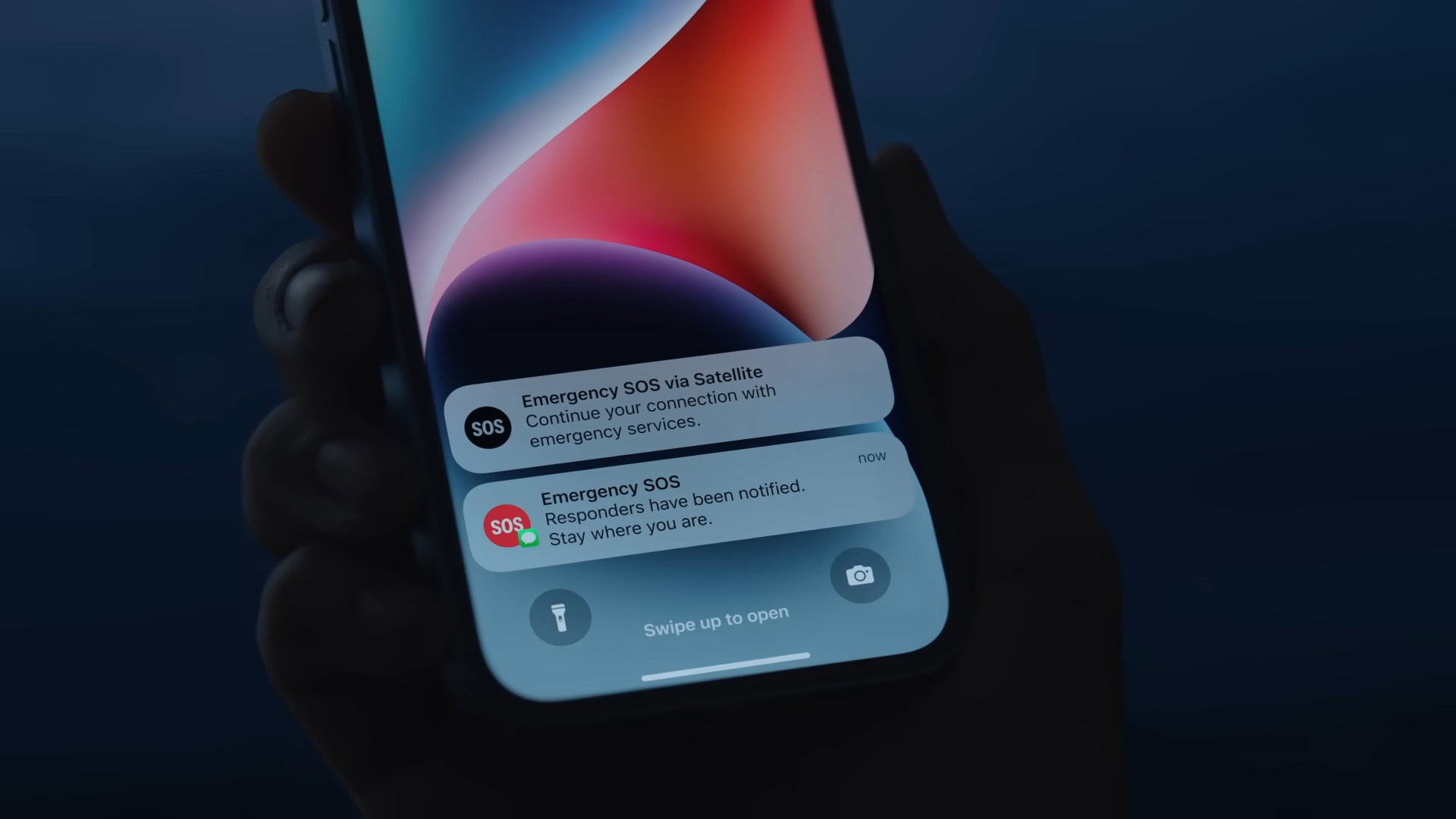
This is where satellite phones become useful. Instead of connecting to cell towers on the ground, satellite phones connect to satellites that orbit the Earth. The signal from the phone is transmitted directly to the nearest satellite, and each satellite services a significantly larger surface of the Earth compared to a singular cell tower. The satellite phone does require an open sky and a line of sight between the phone and the satellite. Effectively, this eliminates the requirement of building a dense mesh of cell phone towers to promise a base level of network connectivity.
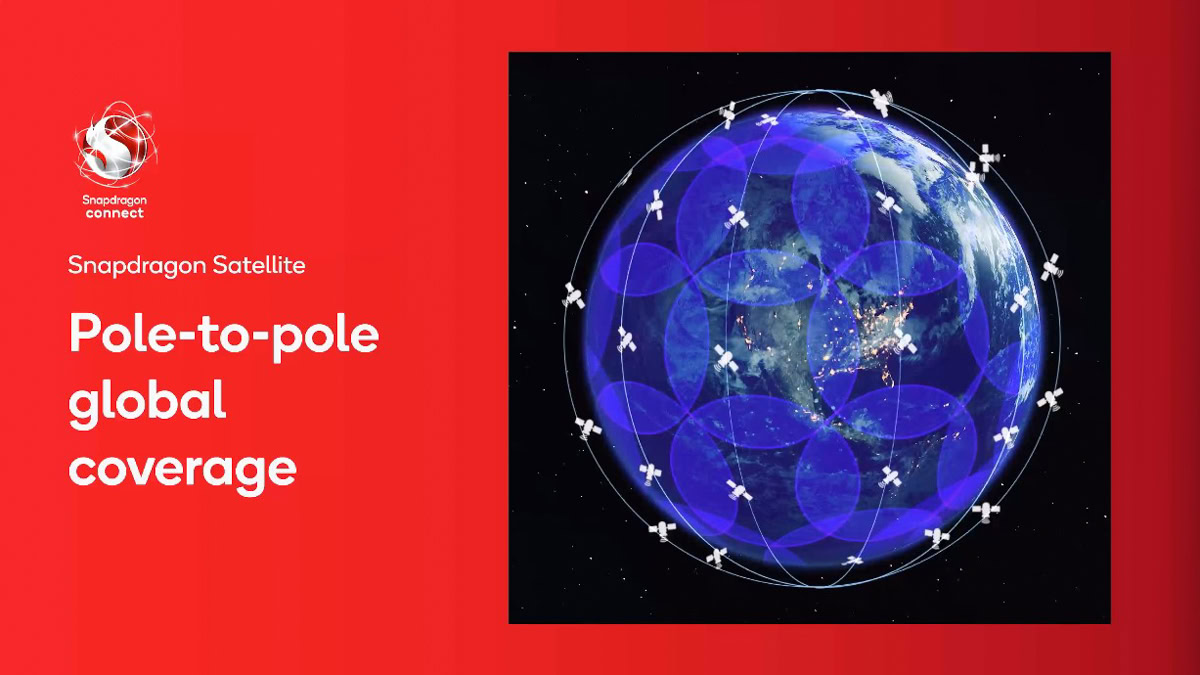
Building cell towers is not possible across the entire landmass, especially in areas with sparse populations or other legal restrictions. And since satellite phones do not require land-based cell towers, they remain operational during disasters that affect the cell tower mesh, like natural calamities or war. This makes satellite phones serve a crucial need that cell phones cannot.
Satellite connectivity on modern smartphones
Satellite phones have historically remained a product that served a very narrow niche. Because of their special connection needs, satellite phones need different connectivity hardware than cell phones.
Smartphones are gaining satellite connectivity primarily for emergency and SOS communication.
However, cell phones have evolved into smartphones that can do more than connect to a cell network and let you call or send text messages. The tech has evolved enough to the point where some level of satellite connectivity can be added to modern smartphones. For instance, smartphones may not entirely replace dedicated communication units on ocean liners, but individuals can use them for emergency communication and distress signaling. We fantasize about a future where the modern smartphone works equally and seamlessly across cellular and satellite networks.
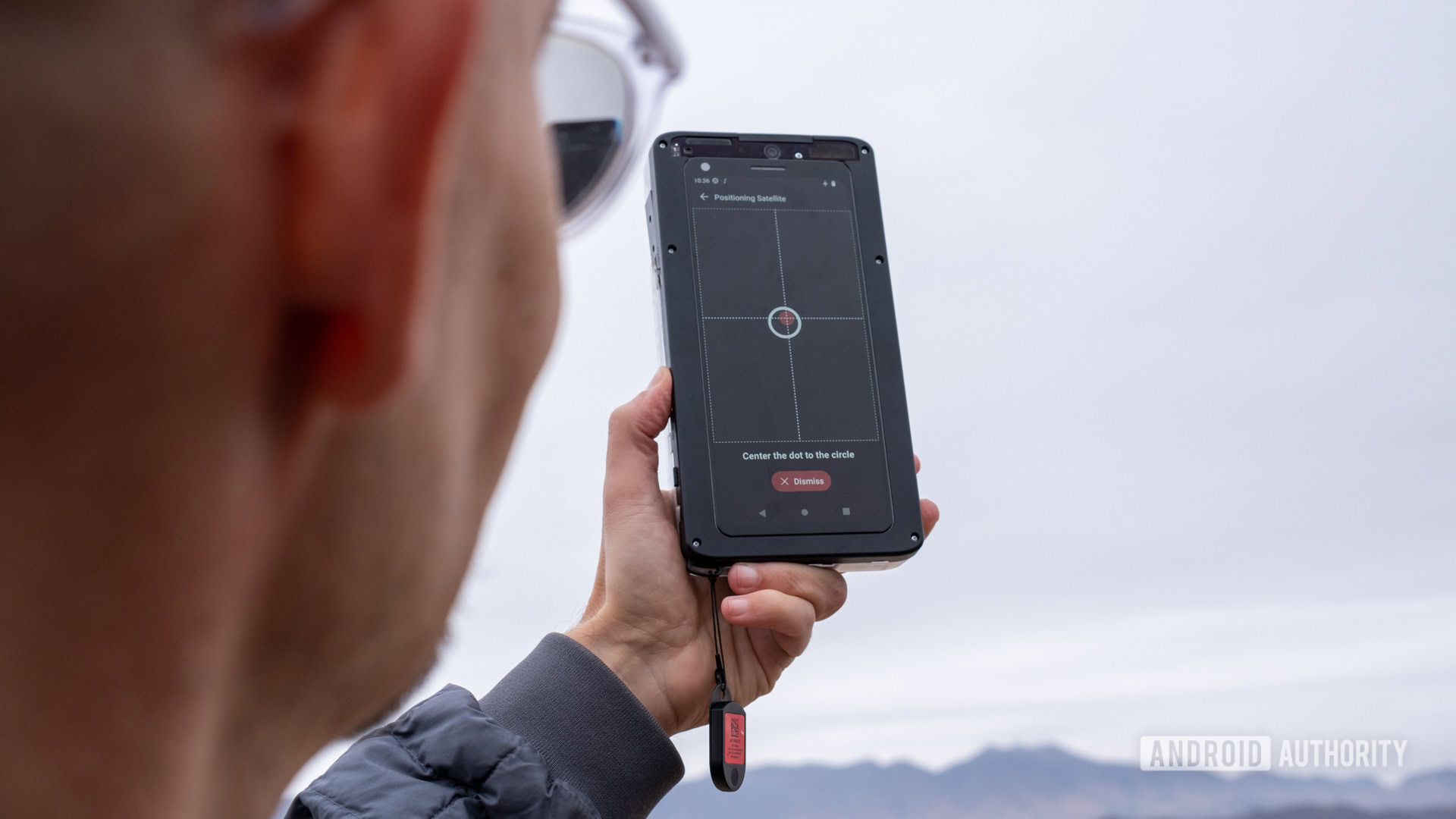
For now, though, most of the available or demoed satellite connectivity options on smartphones focus on SOS messages. In the near future, we can expect to see two-way messaging as well, and some months down the line, we hope to see internet data throughput as well.
T-Mobile and SpaceX’s satellite partnership
- It promises to work with existing 5G smartphones.
- It was set to launch in late 2023, but there is no word on its current status.
When leaks and rumors pointed towards an imminent satellite connectivity launch on the iPhone 14 series, T-Mobile announced its partnership with SpaceX to provide satellite connectivity on smartphones through Starlink satellites.
The highlight of this partnership is that you don’t need a dedicated satellite phone or even satellite connectivity tech in your phone to use it. The partnership literally took flight in January 2024 after SpaceX launched satellites with Direct to Cell technology. This technology allows satellites in space to act as “a cellphone tower in space,” according to Starlink.
SpaceX’s Starlink satellites will broadcast a new network on T-Mobile’s 1900MHz mid-band spectrum, so your existing 5G smartphone should be able to connect to it just fine. So when a T-Mobile subscriber does not have a ground cell tower nearby, they can connect to this new network, send SMS, MMS, and use “select messaging apps.”
Voice and data connectivity are promised to be added in the future, though it would be wise to keep your expectations grounded. A message could take half an hour to go through, so don’t expect it to replace your 5G plan anytime soon.
T-Mobile has not expressly detailed any further pricing information on the plan but said it will aim to bundle it for free on “T-Mobile’s most popular plans.” If you are on a lower-cost plan, you may have to pay an additional monthly fee to avail of this service.
Apple’s Emergency SOS via satellite
- Works with the iPhone 14 and iPhone 15 series.
- Available to use since November 2022 in select regions.
Satellite communication on smartphones became a topic of conversation thanks to Apple. The iPhone 14 and its siblings are the first set of smartphones widely available in the market that support satellite connectivity, although this is restricted to a few countries at launch.
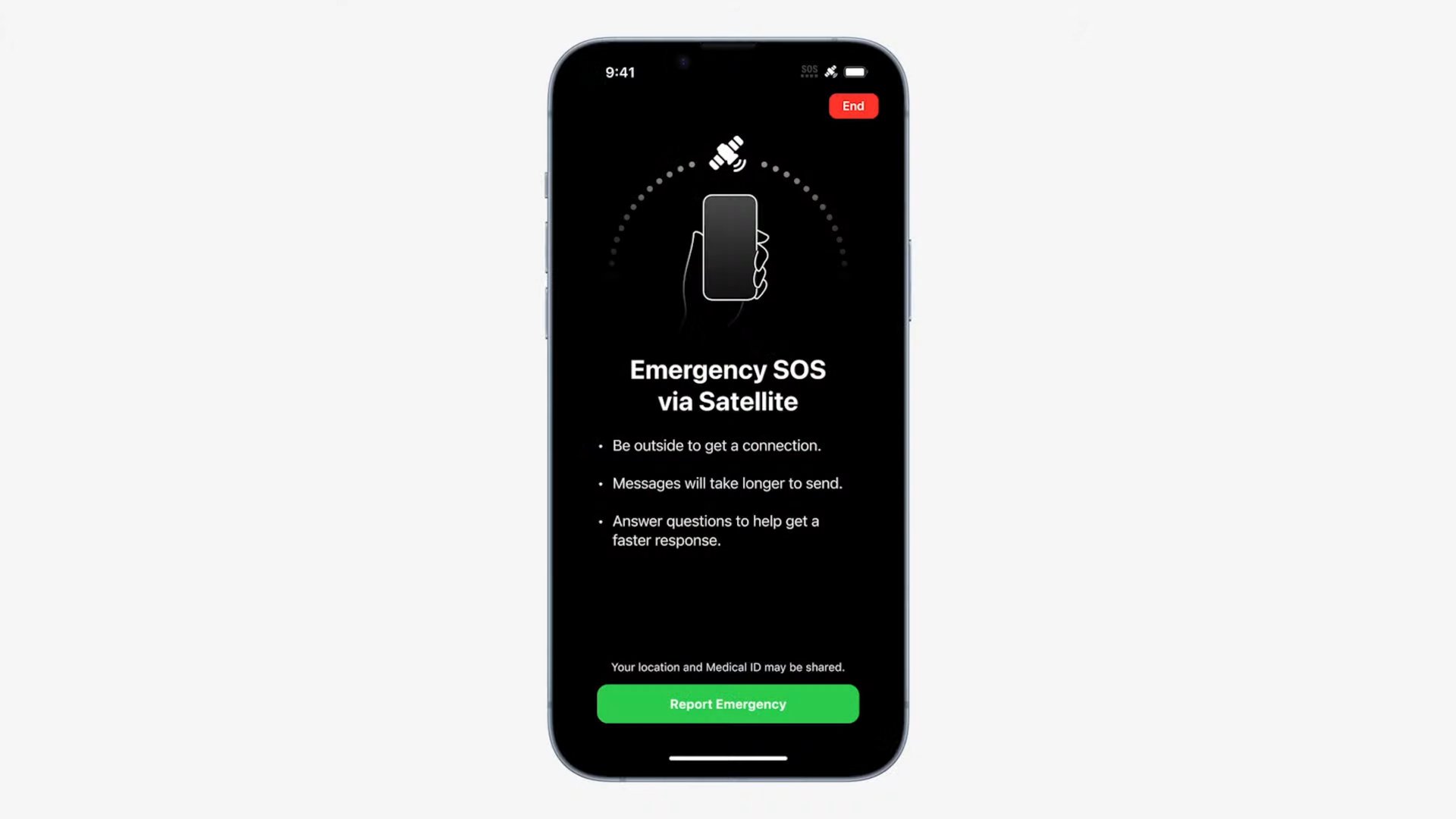
Apple takes a hardware-centric approach instead of a network-centric approach like T-Mobile. You must have one of the eight iPhone 14 or iPhone 15 devices to access this feature. The feature does not work on older iPhones due to the lack of specialized antennas for satellite communication. So, don’t expect the feature to arrive on older iPhones.
The feature was available in United States, Canada, the United Kingdom, Ireland, Germany, and France at launch, but more countries have been added since. These include Australia, Austria, Belgium, Italy, Luxembourg, the Netherlands, New Zealand, Portugal, Spain, and Switzerland. Note that the feature is free for the first two years, and Apple hasn’t detailed what it will be charging after this period. It has partnered with satellite provider Globalstar for this service.
Since the feature requires a direct line of sight with satellites, Apple also built a special interface to help users position their devices optimally. To use the feature, you must be in a location without a network signal and dialing for an emergency. The iPhone will then suggest emergency SOS via satellite and forward your text and location to the nearest emergency service. There’s also a ground relay service that will call emergency services if they do not accept texts.
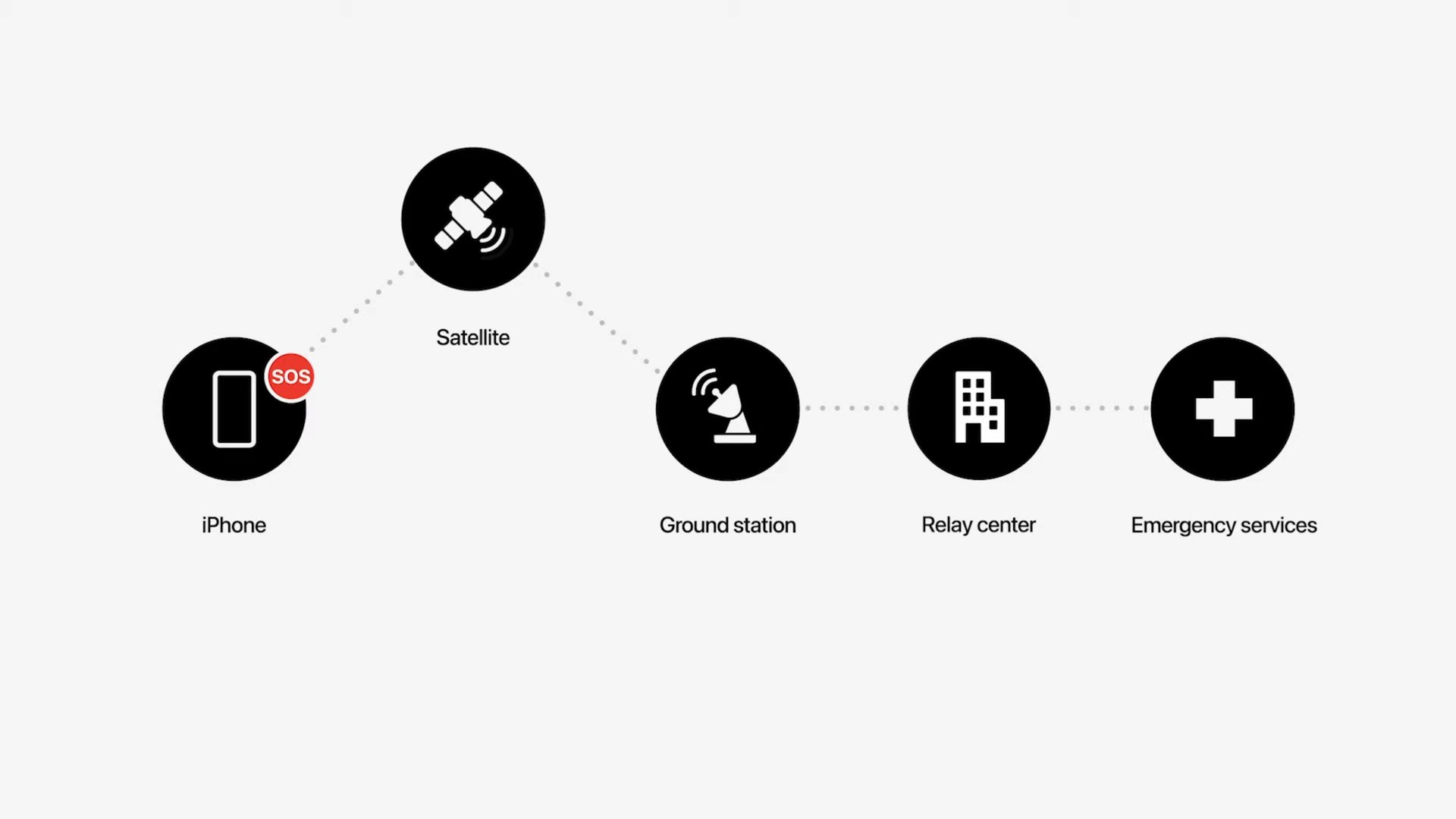
Note that Apple’s Emergency SOS service is a one-way messaging service and does not support receiving responses to the messages sent out. But since the service went live in November 2022, it is indeed the first service to be actually available to consumers in a mass market product.
Android 15’s Satellite connectivity support
Android 15 extends platform support for satellite connectivity. With the Android 15 Developer Preview 2 release, the platform now has UI elements that are needed to “ensure a consistent user experience across the satellite connectivity landscape.” As part of these changes, apps can use APIs that allow them to detect when a device is connected to a satellite, which can give the app more awareness of why full network services are unavailable.
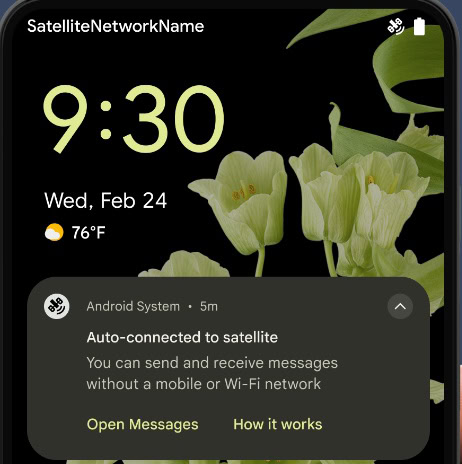
Android 15 also provides support for SMS apps and preloaded RCS apps to use satellite connectivity for sending and receiving messages. This means that satellite connectivity will not be limited to emergency uses only.
Satellite Messaging with T-Mobile
There are clues in the Android 14 QPR3 Beta 2 release which indicates that Google is working on bringing satellite connectivity to Android smartphones, in conjunction with T-Mobile.
This is what the Satellite Messaging page within Android 15 could look like:
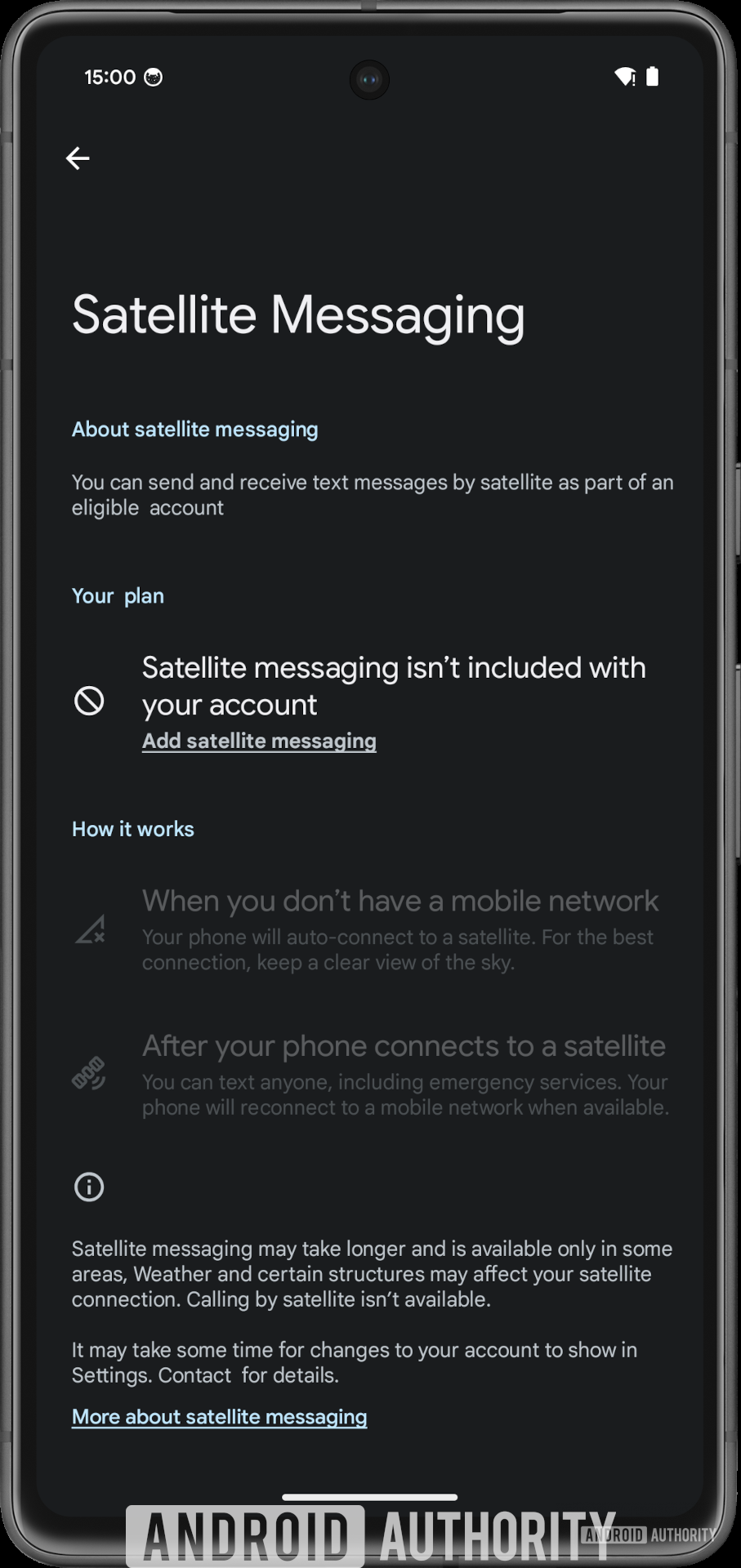
The satellite messaging provider is not immediately clear from the screenshot, but the buttons present on the screen lead to a T-Mobile satellite coverage page, suggesting that T-Mobile could be Android’s satellite messaging provider. In turn, T-Mobile is partnering with SpaceX for satellite-to-phone connectivity.
As we can see from the strings and the surfaced screenshot, when you add satellite messaging to your T-Mobile plan, you will be able to send and receive text messages to any account (and not just emergency services) when you are in an area with no cell service. You will need a clear view of the sky, and the connection could be impacted by weather and other structures. When you are in the range of a mobile network again, your phone will disconnect from the satellite and reconnect to cellular services again.
Google has announced satellite connectivity for the Android platform but has not yet revealed details about this T-Mobile centric-partnership. You can force invoke the above screen by invoking the android.settings.SATELLITE_SETTING Intent action in Android 15 Developer Preview 2.
Samsung’s Exynos modems with satellite connectivity
- The Samsung Exynos 5300 modem features two-way satellite communications technology.
- However, Samsung is still reluctant to feature the technology on its smartphones.
Samsung is also joining the race with its Exynos modems. The Exynos 5300 modem is the latest example, enabling two-way satellite messaging like its industry peers. While this modem forms part of the Exynos 2400 SoC that powers the Galaxy S24 models in some regions, the latest Samsung phone line does not feature satellite communication features.
Presumably, this is due to the Samsung mobile chief’s now famous comments that the functionality of the technology is fairly limited. This has been cited as the reason why satellite connectivity is not present in the Galaxy S23 series and, presumably, remains the case with the Galaxy S24 line as well.
Qualcomm’s Snapdragon Satellite for Android
- The tech would support Snapdragon smartphones that incorporate the feature.
- It was scheduled to launch in H2 2023, but the company has terminated the program.
- Qualcomm intends to work on a standards-based solution instead.
With Apple taking the lead on satellite connectivity on iPhones, Android OEMs are unlikely to sit quietly. In January 2023, during CES, Qualcomm announced Snapdragon Satellite for Android.
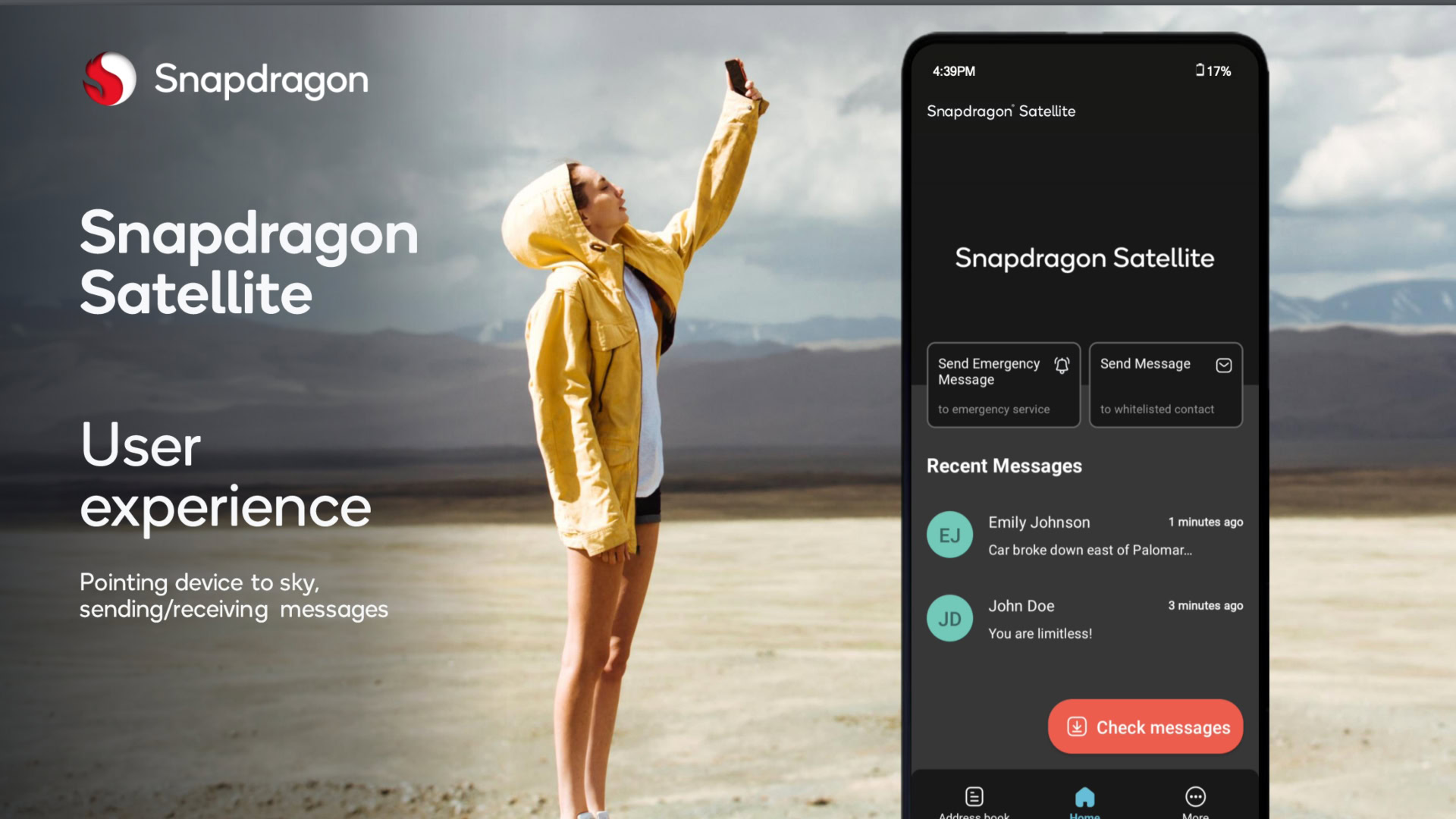
Snapdragon Satellite for Android would shade Apple’s emergency SOS feature, but it expands upon the use cases. Notably, the platform was planned to include two-way messaging, letting users send and receive messages. Rather than being restricted to just a handful of devices, Qualcomm intended to first open the service to the Snapdragon 8 Gen 2 chipset. OEMs could build a smartphone with this connectivity feature.
Qualcomm’s satellite partner for this service was Iridium, but the chipmaker announced that it would part ways with the communications company on this specific venture. This means that Qualcomm Satellite will no longer launch in its intended guise. Instead, Qualcomm confirmed that it would continue to work on a standards-based solution rather than its proprietary technology. In short, satellite communications on Android devices should still be a reality, but likely with a lengthy delay.
MediaTek’s Satellite connectivity chips
- Standalone chips can be used irrespective of the brand of the primary SoC.
- Motorola Defy 2 / CAT S75, Motorola Satellite Link announced, available for pre-order in some regions.
MediaTek also played its hand in February 2023, ahead of MWC. The company showed off two chipsets that enable two-way satellite communication on smartphones. MediaTek’s approach is unique because both are standalone chipsets based on an open, non-proprietary standard. Hence, they do not require smartphones to have a MediaTek CPU. This lets phone manufacturers add satellite connectivity features to any 4G or 5G smartphone, regardless of its primary SoC.
We saw this chip on the Motorola Defy 2/CAT S75 and the Motorola Defy Satellite Link. However, the Bullitt Group behind that product has declared bankruptcy and shut down. The stubs below remain for historical purposes.
Motorola Defy 2 / CAT S75
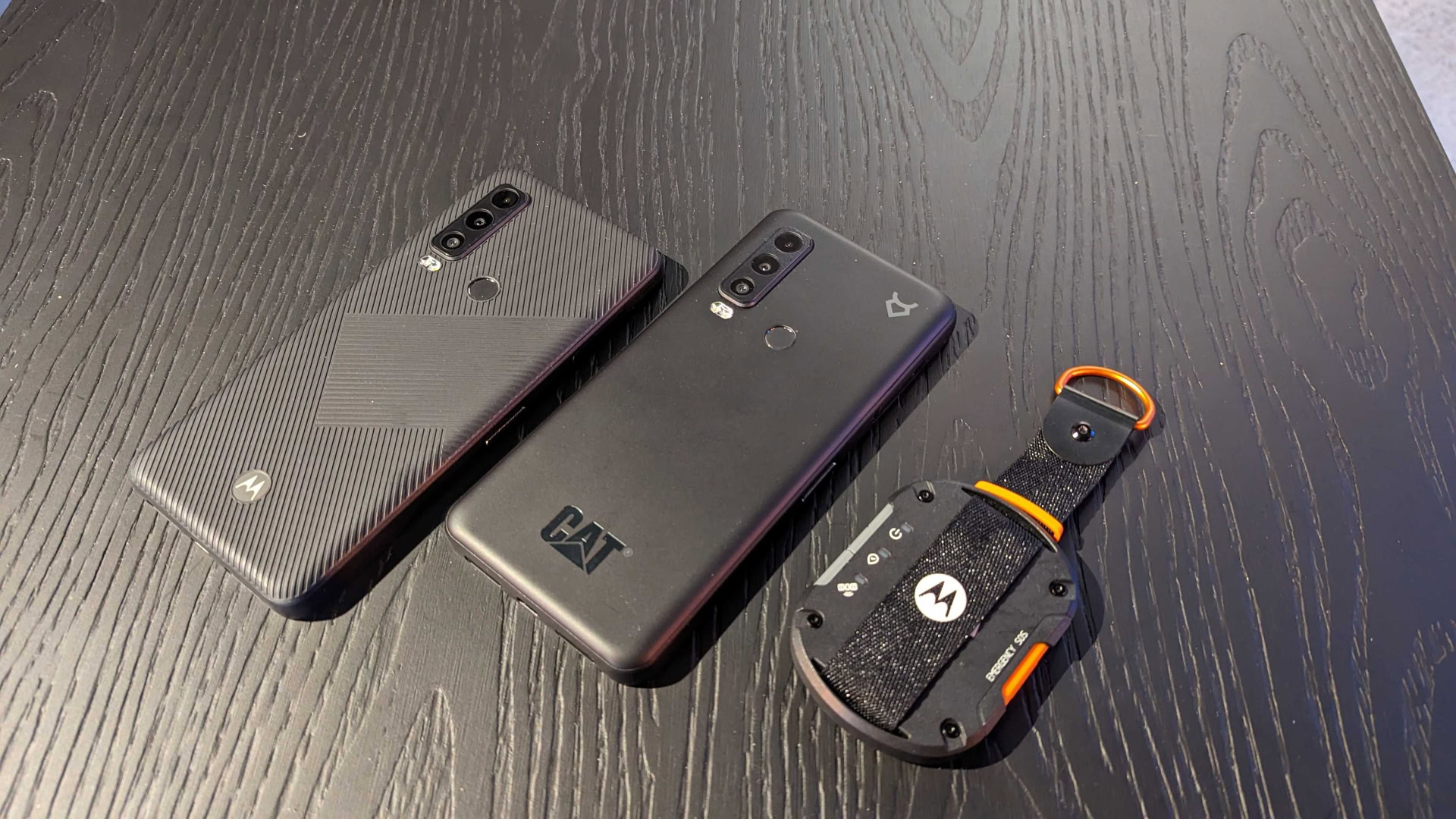
If you want an Android smartphone with incorporated two-way satellite messaging, you need to look at the Motorola Defy 2. This is a rugged smartphone with a built-in two-way satellite messenger called the Bullitt Satellite Messenger, a direct-to-device messaging service for Android phones. And to enable the feature, it relies on MediaTek’s satellite chips for satellite connectivity.
The Motorola Defy 2 is headed to North America, Latin America, and Canada in 2023, with a price tag of $599, which includes a 12-month subscription to the Essential plan from Bullitt (30 two-way messages per month). The plan will cost $5 after the included subscription, while heavier usage plans will go up to $60 for 250 two-way messages.
The same phone has been rebranded into the CAT S75 with a different back design, and you can pre-order it in Europe, the Middle East, and Africa for €599/£549, which includes a three-month free trial of the Essential plan from Bullitt. However, note that Bullitt Group has filed for bankruptcy and shut down.
Motorola Defy Satellite Link
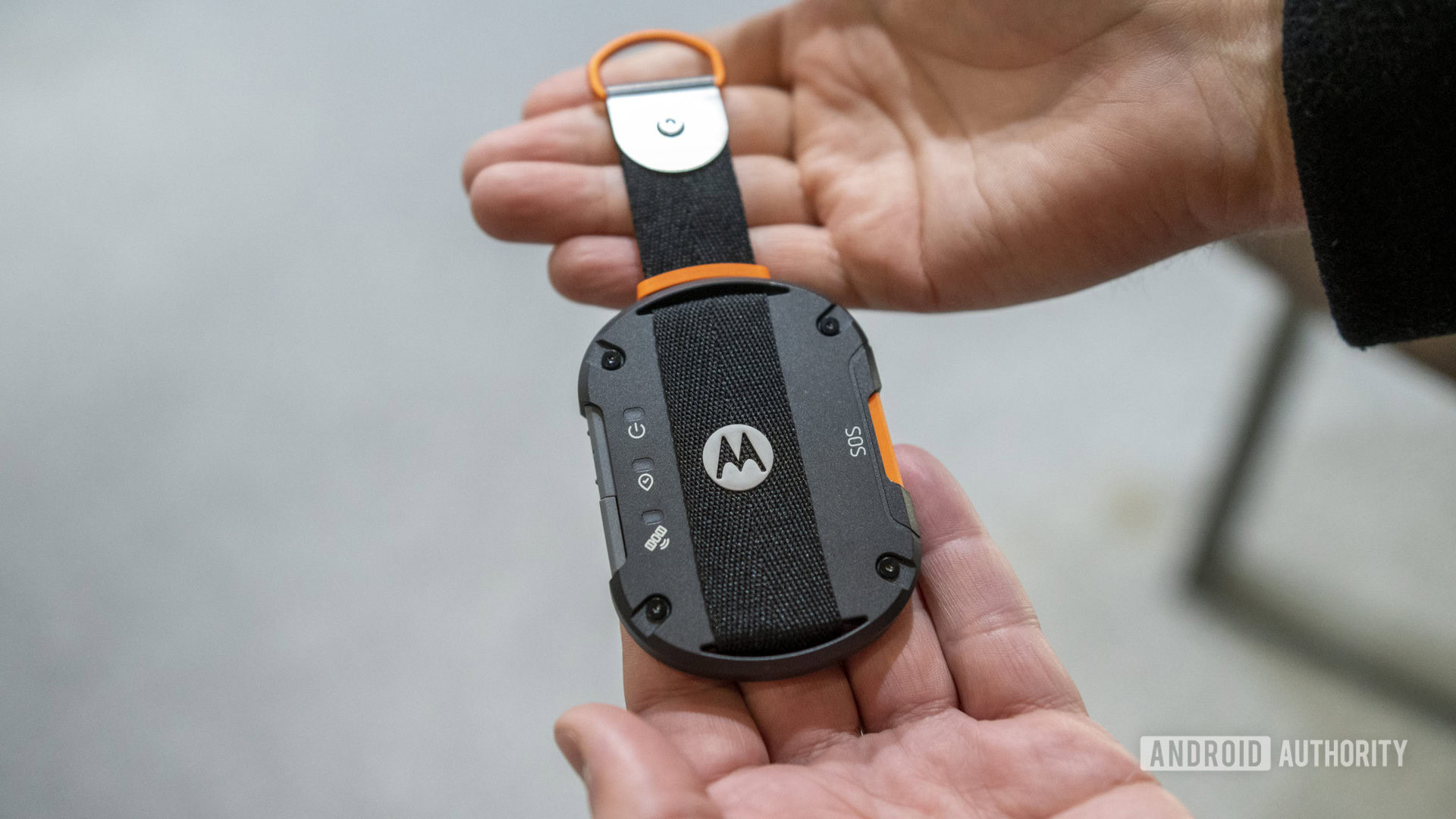
Rugged smartphones aren’t everyone’s cup of tea. If you want satellite connectivity on your current smartphone, you can do so with the Motorola Defy Satellite Link.
The Motorola Defy Satellite Link is a one-device hotspot for satellite connections. It connects via Bluetooth to existing Android and iOS devices, allowing them, in turn, to connect to satellites. You can then send and receive SMS, share location, and access emergency services.
Bullitt builds the Motorola Defy Satellite Link, and as you may have guessed, it is pretty much the same tech as the Defy 2 smartphone, but without the smartphone. You’d still need to use the Bullitt Satellite Messenger app on the connected smartphone to send two-way satellite messages.
The gadget costs $99, but you’ll also need Bullitt’s $5 Essential plan. However, note that Bullitt Group has filed for bankruptcy and shut down.
Do I need satellite connectivity on my phone?
As we established at the beginning of this article, satellite connectivity has important but admittedly niche and limited uses.
The technology has constraints, and as consumers, the cost will be one of your primary concerns. Satellite connectivity on your smartphone is not going to be cheap: It either comes as an upfront cost of a new device like the iPhone 15 (which is also only free for two years and could be any price after that), or it will be tied to a subscription model that will charge per message. Unlike what you may be used to paying for SMS, this cost may appear exorbitant.
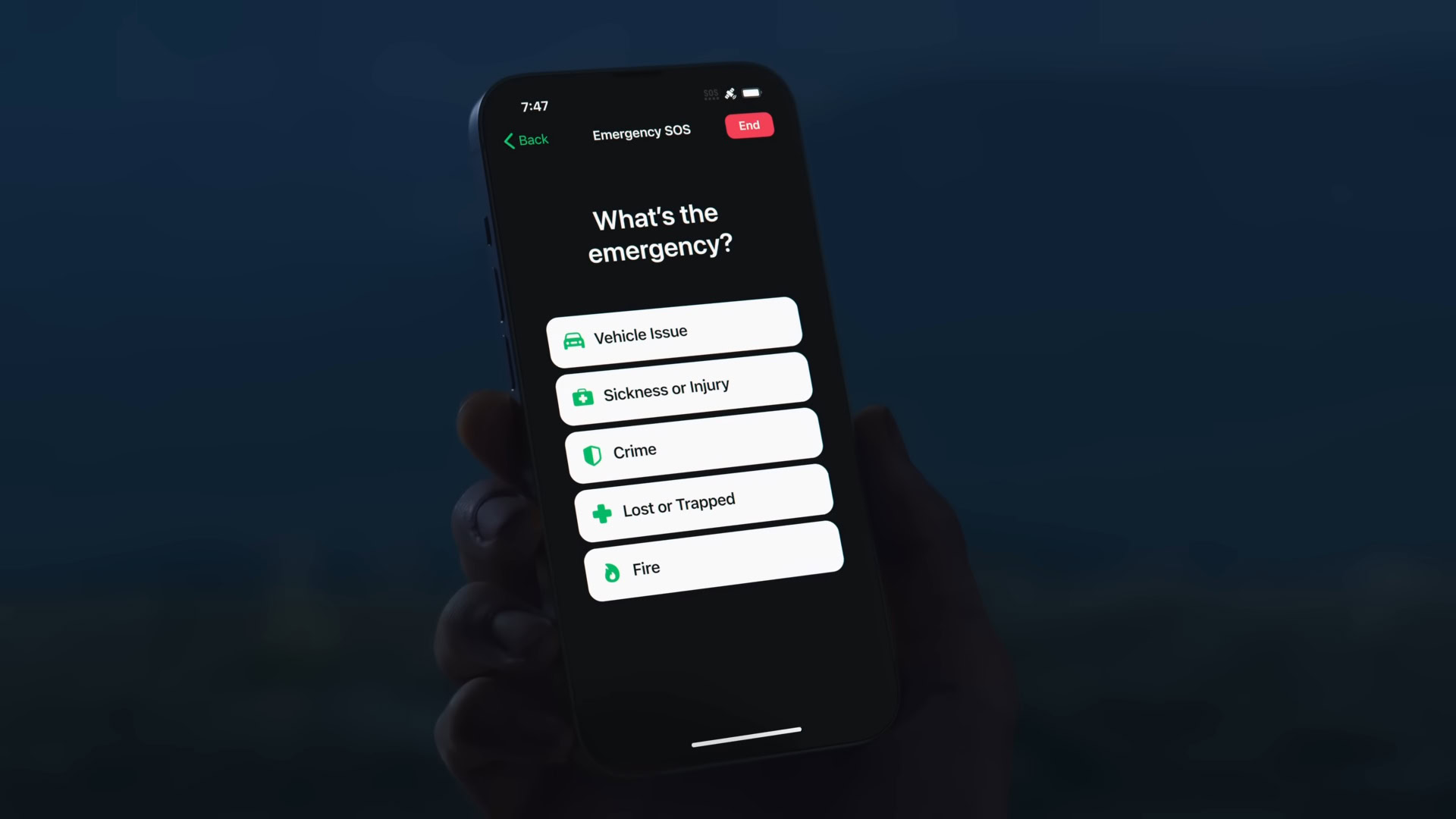
But looking at the use cases, they do appear justified. Remember, emergencies don’t show up with an announcement. You never know when you are in an unfortunate situation where you need to dial an emergency number but have absolutely zero cell network. The probability of such a situation is higher if you frequently visit less-populated areas notorious for bad network reception.
Ultimately, whether you should prioritize satellite connectivity on your smartphone will boil down to you as a consumer. If you don’t see yourself leaving the confines of the city, and all your adventures are on the beaten path, satellite connectivity may have very limited utility for you, if at all. On the other hand, having a device that still allows you to contact emergency services can be priceless if you reside on farmland or have a cabin by the woods.
If you live in a remote area, or you often venture off the beaten path, then satellite connectivity is for you.
We do expect pricing for the tech to rationalize in the coming years. We also expect the tech to become even more accessible than it already is. If the costs appear prohibitive to you today, they may appear worth it down the line for the simple peace of mind.
FAQs
Yes, the iPhone 14 and iPhone 15 series supports satellite connectivity in 16 regions, including the United States, Canada, the United Kingdom, Ireland, Germany, and France. The technology is used to enable Emergency SOS features.
The Galaxy S23 series does not support satellite connectivity in any region.
No, the Galaxy S24 series does not support satellite connectivity in any region.
As of right now, satellite connectivity focuses on providing emergency SOS connections through text messages only. Internet usage is outside the current scope of the technology.
